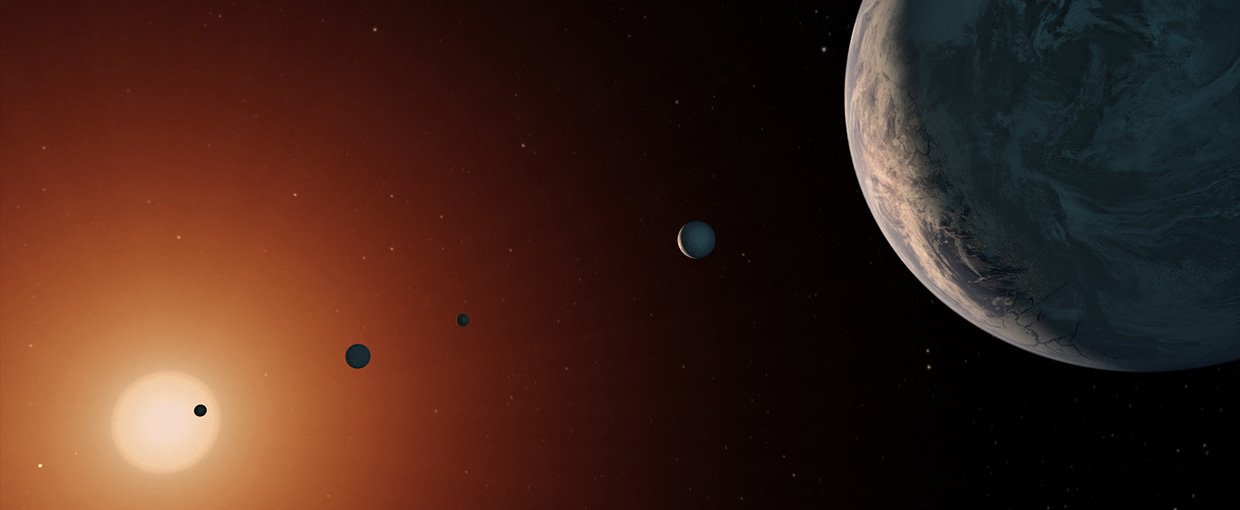
In two papers, NASA-supported scientists have reported new insights into the formation of habitable zones and planets around stars. The first study focuses on the formation and evolution of planets around nearby low-mass stars. An increasing number of planets have been identified around such stars and astrobiologists have questioned whether or not these planets could support atmospheres through periods of heightened stellar activity typical in these systems. Using simulations, researchers studied the process of planet formation across a range of masses for M-dwarf stars. In doing so, they were able to estimate how much debris is left over after planets form. The idea is that such debris could deliver volatile chemical elements and chemical compounds to planets after they finish forming, helping to replenish their atmospheres.

Artist’s impression of a M dwarf star surrounded by planets.Image credit: NASA/JPL-Caltech/MSSS.
The team then incorporated high-resolution models of real systems (TRAPPIST-1, Proxima Centauri, and TOI-700). They found that debris would be quickly removed from the habitable zone while planets were forming, and that an exo-asteroid belt region was created. In fact, the formation of an exo-asteroid belt might be a very common result of planetary formation. Such a belt could then serve as a reservoir of small, icy bodies. With these chunks of rocks perched outside the habitable zone, Neptune-Saturn mass planets further out in the system could perturb asteroids and send them crashing into rocky planets inside the habitable zone. This process might help to keep the planets from becoming completely desiccated by stellar activity.
A second paper also deals with the bombardment of planets around M-Dwarf stars by smaller bodies, and the effects of these impact events on planetary atmospheres. Here the team discusses impacts of debris late in the planet-forming process. By comparing the formation of the Solar System with models of systems around M-Dwarf stars, the team provides insight into the potential conditions on young planets around low mass stars. What they found was that planets around smaller stars are less likely to experience impacts large enough to generate reduced atmospheric compounds – compounds that could be relevant to prebiotic chemistry.
The two papers, “Habitable Planet Formation around Low-mass Stars: Rapid Accretion, Rapid Debris Removal, and the Essential Contribution of External Giants” and “Reduced Late Bombardment on Rocky Exoplanets around M Dwarfs,” were published in The Astrophysical Journal Letters.
